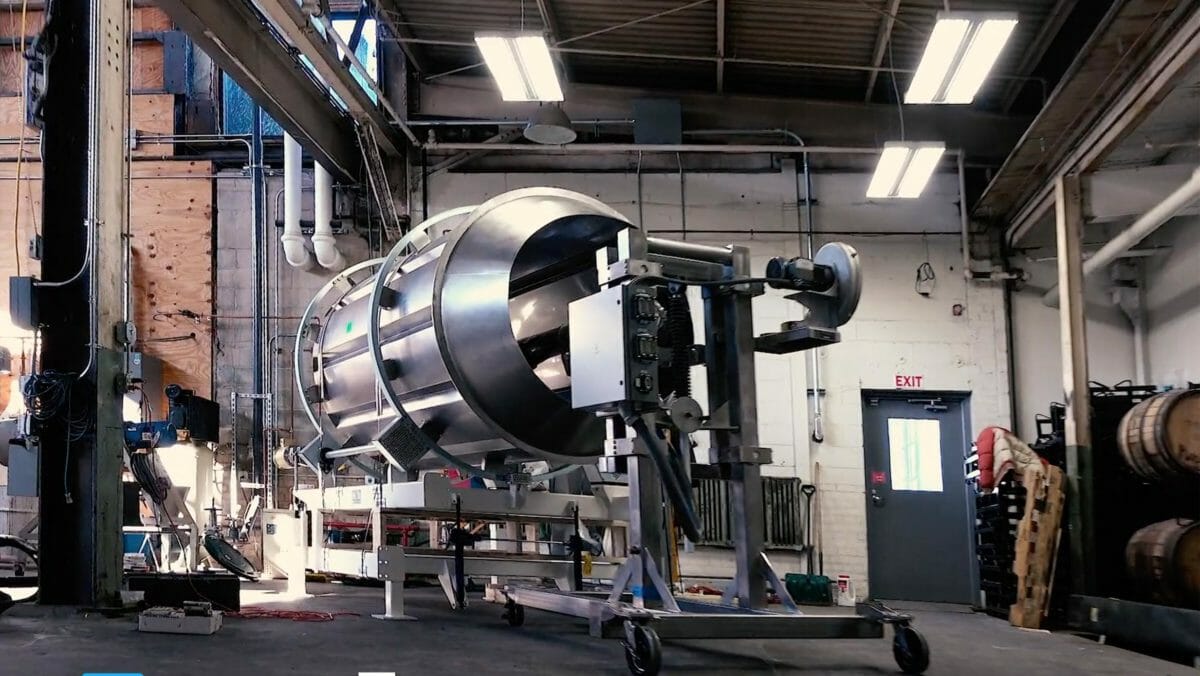Spent grain isn’t especially pretty, but it is nutritious. The mass of barley, wheat, rye, or oats leftover from the beer-making process resembles a crumbly porridge, or a sticky, damp cereal—but locked inside those grains are proteins, fiber, and fats. A typical small brewery generates between 500 and 1,000 pounds of spent grain in the process of brewing enough beer to fill 20 kegs. That adds up to roughly two tons of spent grain per week.
Often, craft breweries partner with farmers who haul away spent grain and feed it to livestock. But with the number of American craft breweries growing—there are more than 8,000 currently in operation—there aren’t enough farmers in geographic proximity to those breweries to use up all the grain.
Spent grain could be turned into flour to bake foods for human consumption, if the right supply chain existed. If a commercial food company, such as a bakery, wanted to make use of spent grain, it would have to be kilned (basically dried in an oven) and then ground into flour. An individual small brewery couldn’t supply enough grain to a large company like General Mills, nor could a small bakery afford the type of kilning and milling technology it would take to process spent grain.
That’s where a Minneapolis, Minnesota-based food upcycling company called NETZRO saw an opportunity. NETZRO uses technology to reduce waste in the industrial food supply, with the goal of removing 6 billion pounds of waste each year. The company helped organize a first-of-its-kind collaborative called the Twin Cities Spent Grain Co-Op, which unites a handful of breweries and one distillery to turn spent grain into baking flour. Trucks haul away the breweries’ spent grain, which is then kilned via infrared heat and milled and packaged by an artisan grain mill called Baker’s Field Flour & Bread.
The end result: whole wheat spent grain flour. NETZRO sells the 24-oz. bags of bags for $12.50 on Etsy; home bakers can use the flour blends like they’d use all-purpose flour—in pancakes, scones or muffins. But the upcycled flour has properties traditional flour doesn’t: Because brewing removes much of the grains’ sugars, the spent grain flour is lower in sugar and higher in protein and fiber than most flour. And according to NETZRO founder and CEO Sue Marshall, the blends have a robust flavor, with notes of rye or caramel depending on the beer or spirit that the grains were used to produce.
She’s most proud, though, that NETZRO and the Twin Cities Spent Grain Co-Op have created a scalable model for making food out of what is often a waste product.
“Taking a little bit of spent grain from someone here and there and making a granola bar—it’s cute, but it’s not ever going to begin to solve the problem,” says Marshall, who is also on the board of the newly created Upcycled Food Association. “We don’t want to just pick up a couple buckets a week.”
She’s now looking into the possibility of forming spent grain co-ops in a number of other Midwestern cities, including Milwaukee and Detroit.
She expects breweries will be clamoring to participate.

The co-op uses a kiln to dry the spent grain. Photo courtesy of NETZRO.
“There are breweries who can’t get a farmer to come or don’t brew enough to have a big hauling company come through,” says Keigan Knee, cofounder of Modist Brewing Co. in Minneapolis, a Twin Cities Spent Grain Co-Op member. He notes that dumpsters with biodegrading capabilities are an option, but are too expensive for most small breweries. “So they just throw spent grain away. That messes up our waste system; that can increase pollution. That’s the importance of finding alternative ways for grain removal and reuse.”
Waste reduction efforts are perennially popular in the food industry, but NETZRO and the spent grain collaboration happened to release these types of flour just in time for the spike in home baking during the pandemic. Marshall says the timing of the spent grain flours’ launch was a small silver lining to this difficult year.
“It would have eventually happened without covid, but it wouldn’t have gone this quickly,” she says.
The Link LonkAugust 31, 2020 at 08:00PM
https://modernfarmer.com/2020/08/from-spent-grain-to-fresh-bread/
From Spent Grain to Fresh Bread - Modern Farmer
https://news.google.com/search?q=fresh&hl=en-US&gl=US&ceid=US:en

No comments:
Post a Comment